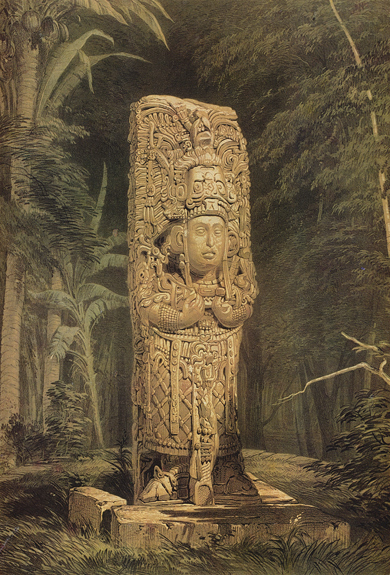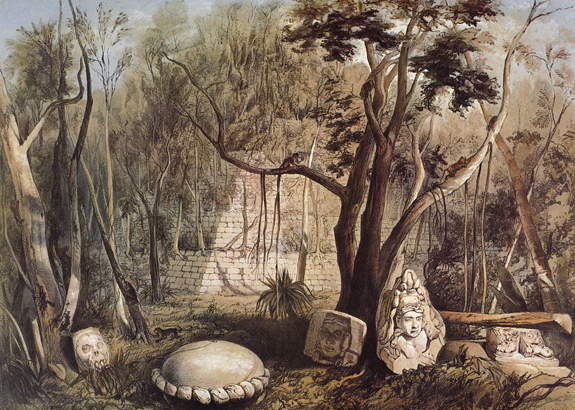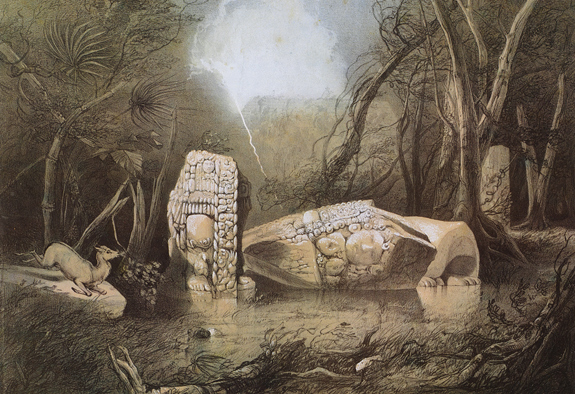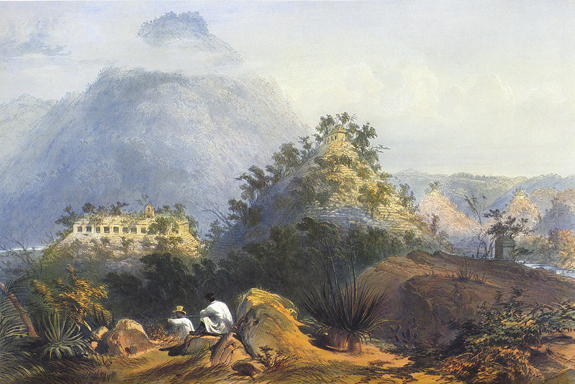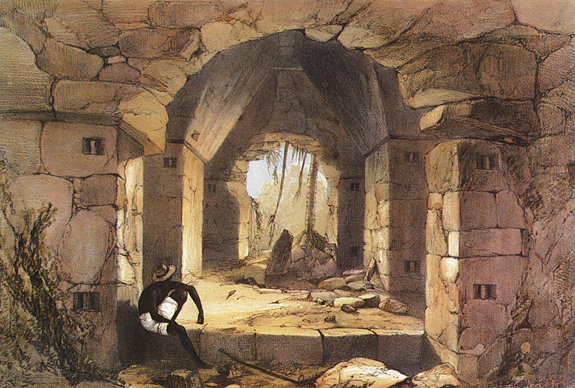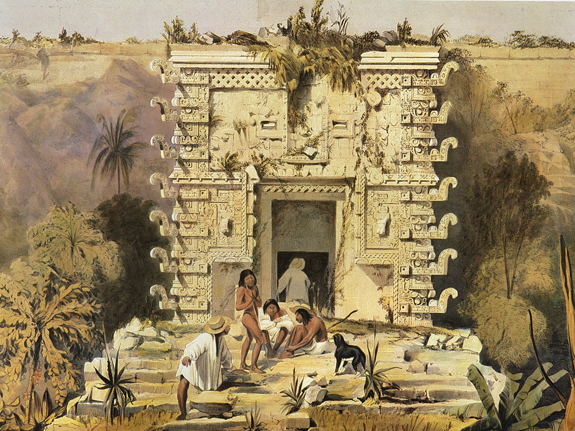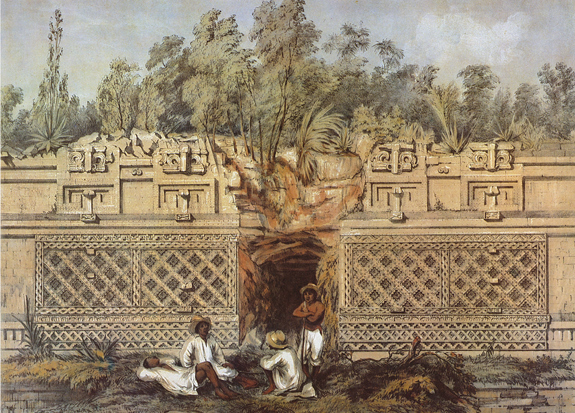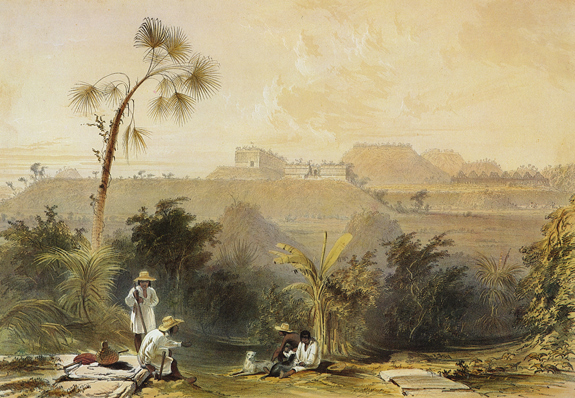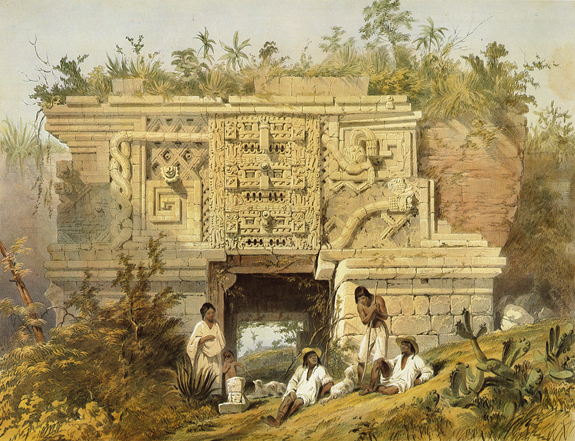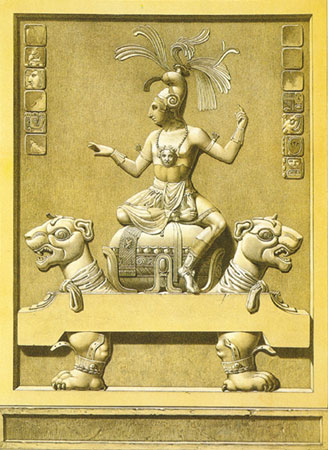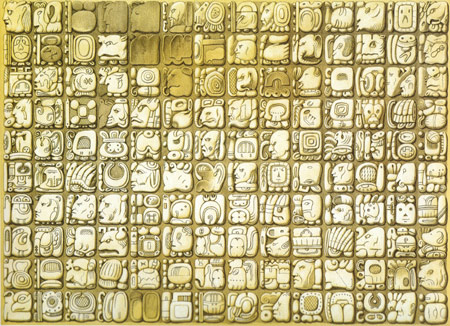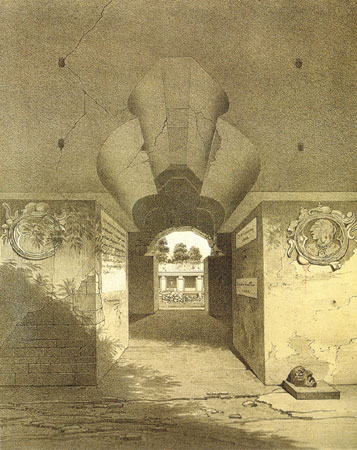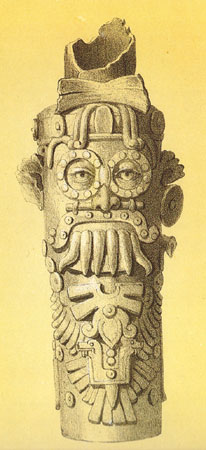Hola, buenos días.
__Aquí va la última ilustración de Frederick Catherwood sobre sus viajes por el área maya. Estoy pensando iniciar próximamente otra serie con los dibujos de Tatiana Proskouriakoff. ¿Que os parece? Alguna otra preferencia o sugerencia? Buen comienzo de semana.
_
Lámina 25: Colosal cabeza en Izamal
_
__"En esta imagen de la gran pirámide de Izamal, Kinich Kak Mo, la colosal cabeza de una figura Maya se vislumbra muy por encima del explorador naturalista, el Doctor Samuel Cabot Jr. La paleta de colores oscuros y misteriosos que utiliza Catherwood, en contraste con sus otros gravados a la luz del día, genera una imagen peristente. Catherwood representa cuidadosamente la imagen de la luna asomándose sobre la escena, mientras la colosal cabeza Maya observa con sus fauces abiertas a los intrusos cazadores de un jaguar, un animal que representaba a varias deidades mayas. Esta ilustración sumamente romántica de Catherwood es uno de los pocos registros que existen en Occidente de la cabeza colosal antes de que esta se desplomase.
__No es una coincidencia el que Catherwood haya dado tanta importancia a la luna y los jaguares en esta imagen. Las fases de la luna constituían la base del calendario Maya, y en Mesoamérica, el jaguar era uno de los animales más temidos y respetados, y representaba el poder y la autoridad. Por otra parte parece que Kinich Ahua, el dios sol, a quien esta pirámide fue dedicada, tenía cierta relación con el jaguar durante su recorrido nocturno hacia el abismo. Los mayas creían que cuatros bacabs (guardianes del cielo) sostenían las trece capas de la tierra, mientras que al jaguar se lo relacionaba a menudo con el abismo".
__No es una coincidencia el que Catherwood haya dado tanta importancia a la luna y los jaguares en esta imagen. Las fases de la luna constituían la base del calendario Maya, y en Mesoamérica, el jaguar era uno de los animales más temidos y respetados, y representaba el poder y la autoridad. Por otra parte parece que Kinich Ahua, el dios sol, a quien esta pirámide fue dedicada, tenía cierta relación con el jaguar durante su recorrido nocturno hacia el abismo. Los mayas creían que cuatros bacabs (guardianes del cielo) sostenían las trece capas de la tierra, mientras que al jaguar se lo relacionaba a menudo con el abismo".
_
*__*__*__*__*__*__*
_
Plate 25: Colossal head, at Izamal (on stone, by H. Warren)
_
__"In this image of Izamal’s great pyramid, Kinich Kak Mo, the colossal head of a Maya figure looms high above the expedition’s naturalist, Dr. Samuel Cabot, Jr., and an unnamed Maya attendant. Catherwood’s palate of dark, mysterious colors, in contrast to his daylight prints, generates a lingering image. Catherwood carefully depicts the moon looking over the scene, as the colossal head of a Maya figure gapes at the intruders hunting a jaguar, an animal that represented several forms of ancient Maya gods. Catherwood’s highly romanticized illustration is one of the only Western records of the colossal head before it dropped to the ground.
__It may not be coincidental that Catherwood draws upon the importance of the moon and jaguars in this image. The moon’s phases formed one basis for the Maya calendar; and in Mesoamerica, the jaguar was one of the most feared yet respected animals, denoting power and authority. Moreover, Kinich Ahua, the sun god to whom this pyramid was dedicated, may have been linked to the jaguar when he made his nightly journey through the underworld. The Maya believed that four bacabs (sky-bearers) supported the thirteen layers of sky, but the jaguar was commonly associated with the underworld".
__It may not be coincidental that Catherwood draws upon the importance of the moon and jaguars in this image. The moon’s phases formed one basis for the Maya calendar; and in Mesoamerica, the jaguar was one of the most feared yet respected animals, denoting power and authority. Moreover, Kinich Ahua, the sun god to whom this pyramid was dedicated, may have been linked to the jaguar when he made his nightly journey through the underworld. The Maya believed that four bacabs (sky-bearers) supported the thirteen layers of sky, but the jaguar was commonly associated with the underworld".
_
Mercedes Pepper (exhibition online Drawing from the Past)
Mercedes Pepper (exhibition online Drawing from the Past)






